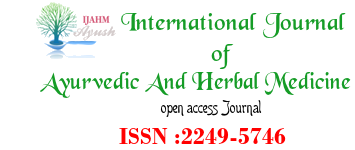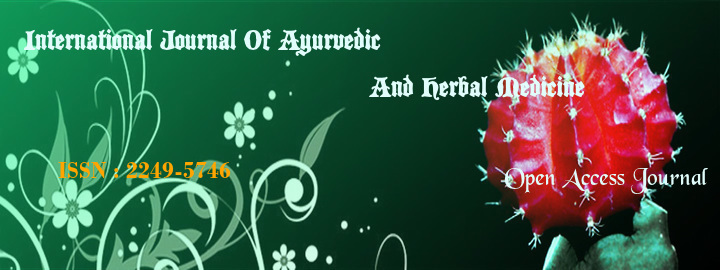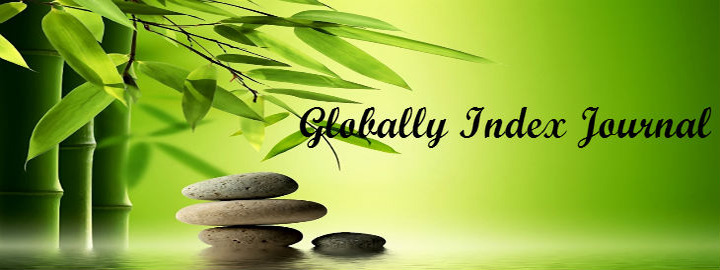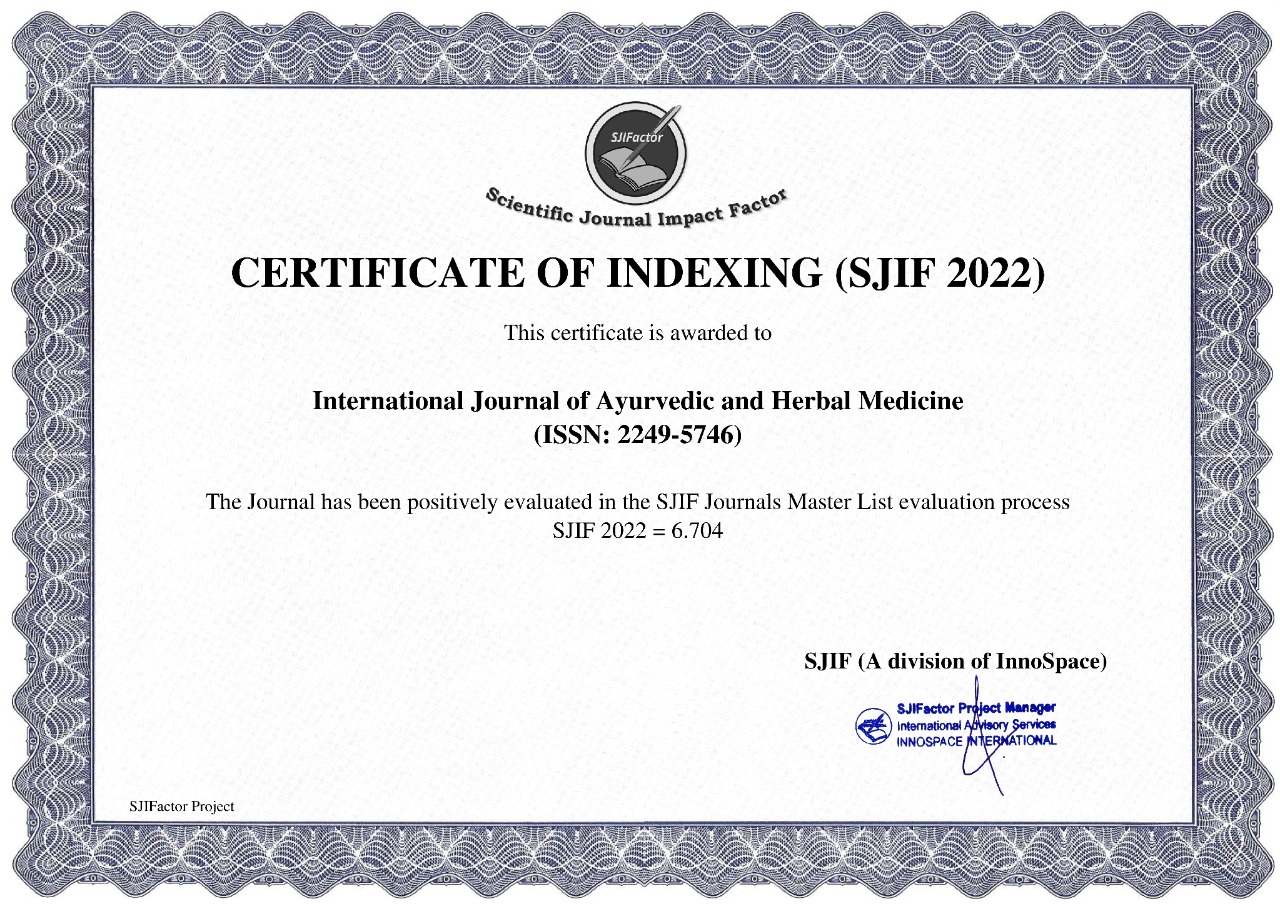


Volume & Issue : Volume 4 Issue 5
|
More D.B.1*, Gajarmal A. A.2, Shende M.B.3 1*. Assistant Professor, Department of Dravyagunavigyana, Government Ayurveda College, Nanded- 431601 Maharashtra, India 2. P.G. Scholar, Department of Dravyagunavigyana, Government Ayurveda College, Nanded- 431601 Maharashtra, India. 3. Guide & Associate Professor, Department of Dravyagunavigyana, Government Ayurveda College, Nanded- 431601 Maharashtra, India. Address For correspondence Dr. D.B.More, Department of Dravyagunavigyana, Government Ayurveda college, Wazirabad, Nanded - 431601 Maharashtra, India. Email: This email address is being protected from spambots. You need JavaScript enabled to view it. |
Abstract
In the era of modern world, the demand of Ayurvedic medicine is increasing day by day. As medicinal plants are rich source of bioactive compound. They serve as important raw material for drug production. But for production of drug, the raw material used should be free from all types of adulterant. All these facts has prime importance in one of the branch of Ayurveda called Dravyagunavigyana. During ancient time, the preparation of medicine was done by self-physician as a part of the practice, so the preparation of medicine was limited. Selective and personal level only, later on this attitude changed and it turned into profession for the motive of profit. Popularity among the common people increased the used of medicinal plant, herbal adulteration is one of the malpractice in herbal raw material trade. On the same mode, in majority of Ayurvedic literature, the drug Manjishtha is considered as the mula (root) of Rubia cordifolia Linn. But it is seen that Ayurvedic Pharmacopoeia, Part I, Vol. III, published by the Ministry of Health and Family Welfare, Dept. Of AYUSH, Govt. of India, describes kaand (stem) of R. cordifolia as Manjishtha. Indigenous systems of medicine play a vital role in rural health populations. Complexities in herbal nomenclature system in indigenous systems of medicine lead to misidentification of plants. Identifying the exact plant mentioned in traditional literature and identifying the adulterants or substitutes are major tasks in basic research. Sample collection is one of the most important work. But there are controversies between researchers in identifying the source of plants. In the same way, Rubia cordifolia does not appear have been much cultivated but it was still mostly collected form the wild. That’s why this review article enumerates about comparative studies of different samples of Manjishtha (Rubia cordifolia Linn) w.s.r.to Deshvichara.
Key word
Ayurveda, Manjishtha, Rubia cordifolia Linn., Root, Desh
REFERANCES
1. Sivarajan, V.V. and Balachandran, I. 1994, Ayurvedic Drugs and Their Plant Sources, Oxford & IBH Publishing Co.
2. Chatterjee, A. and Pakrashi, S.C. 1997, The Treatise on Indian Medicinal Plants (Vol.5), NISCOM, New Delhi.
3. Kirtikar, K.R. and Basu, B.D. 1981, Indian Medicinal Plants Vol-2, Lalit Mohan Basu, Allahabad.
4. Antarkar, D.S., Bhatt, M., Chinwalla, T. and Vaidya, A.B. 1984, Ind. Jour. of Pharmacs., 15, 185.
5. Kosuge, T., Ochi, A., Yokota, M. and Yoshida, M. 1982, Med. and Aro. Plant Abs., 4, 169.
6. Sivarajan, V.V. and Balachandran, I. 1994, Ayurvedic Drugs and Their Plant Sources, Oxford & IBH Publishing Co.
7. Laszlo, M., Gyurjan, I., Danos, B., Hollosy, F., Liszt, K., Kretovics, J., Szokan, Gy. And Toth, Z. 1992, Planta Medica 56, 613.
8. Anonymous, 1978, The Ayurvedic Formulary of India, Part-I (I-edi), New Delhi.
9. Pahania, S., Daman, R., Bhandari, S., Singh, B. and Brij Lal, 2006, Comparative studies of Rubia cordifolia L. and its commercial samples, Ethnobotanical Leaflets, http://www.siu.edu/~ebl/leaflets/rubia.htm.
10. Dengre, R.G., Patel, K.N. and Chauhan, M.B., 1993, Comparative studies of Rubia cordifolia Linn. And Rubia tinctorum Linn. (Rubiaceae), Ancient Science of Life, V.13 (1&2), pp: 165-179.
11. Hooker, J.D., 1882, he Flora of British India, Vol III, L. Reeve & Co, London. pp: 202-204.
12. Sarin, Y.K., 1996, Illustrated Manual of Herbal Drugs used in Ayurveda, CSIR & ICMR, New Delhi.
13. Santapau, H. and Henry, A.N., A dictionary of the flowering plants in India, NISCOM, New Delhi, India. pp: 148.
14. S.K. Mitra and R. Kannan, Rubia cordifolia Linn. (Manjistha) – Controversial Identity, Ethnobotanical Leaflets 11: 24-26. 2007.
15. Wagner, H. and Bladt, S. 1996, Plant drug analysis: A Thin Layer Chromatography Atlas, Berlin Springer-Verlag, New York.
16. Daniel, M. 1991. Methods in Plant Chemistry and Economic Botany, Kalyani Publishers, New Delhi.
17. Shah Kinjal et al.: Adulteration of market sample of Manjishtha, Indian Journal of Traditional Knowledge Vol.13 (2), April 2014, 331-334.
18. S. Pathania, R. Daman, S. Bhandari, B. Singh and Brij Lal, Comparative Studies of Rubia cordifolia L. and its Commercial Samples, Ethnobotanical Leaflets 11: 179-188. 2006.
19. Dnyaneshwar B. More, S.R.Rakhunde, S.G. Jyotishi, Comparative phamacognostic and phytochemical studies of self-collected and marked sample of Manjistha (Rubia cordifolia Linn), Dissertation 2007-2010 , Dept. of Dravyaguna Vigyana, Shri Ayurved Mahavidyala, Nagpur, Maharashtra.
index























